

Max Davies
2026 Toyota HiAce review
7 Hours Ago
The entry grade Kia Sorento diesel AWD variant lacks a few of the luxury features found higher up the range. But it offers a cushier ride, retains the practicality, and costs $50,000 drive-away. It's well worth a look.
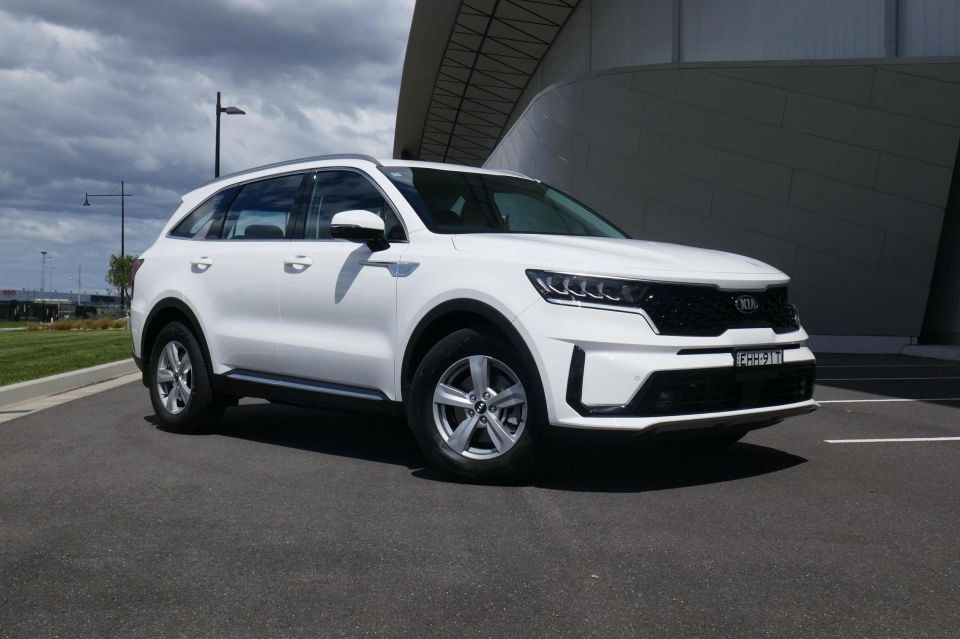
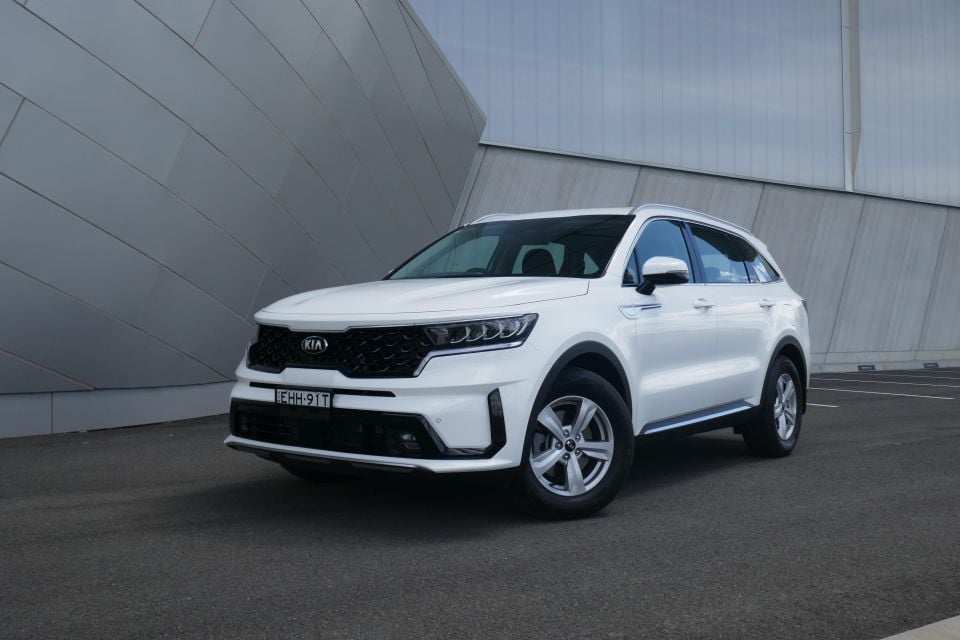

Senior Contributor
New from
$46,490
excl. on-roads

Senior Contributor
New from
$46,490
excl. on-roads


Senior Contributor
New from
$46,490
excl. on-roads

Senior Contributor
New from
$46,490
excl. on-roads
Quickly see how this car stacks up against its competition. Select any benchmark to see more details.
Where expert car reviews meet expert car buying – CarExpert gives you trusted advice, personalised service and real savings on your next new car.
The brand new Kia Sorento seven-seat SUV has made some waves since its recent launch.
Most of the promotional material is focused on the range-topping GT-Line that offers features like remote parking assist, a head-up display, blind-spot camera views in the digital instruments, and quilted Nappa leather seats. Kia reckons it’s an affordable alternative to a European luxury SUV.
At the other end of the four-variant range is the version you see here, the $15,000 cheaper Sorento S. This is the base model, though Kia’s aspirations for it go beyond low-margin fleet customers. It offers all of the same fundamentals as the deluxe grades, but less icing on the cake.
Is it where the smart money should go?

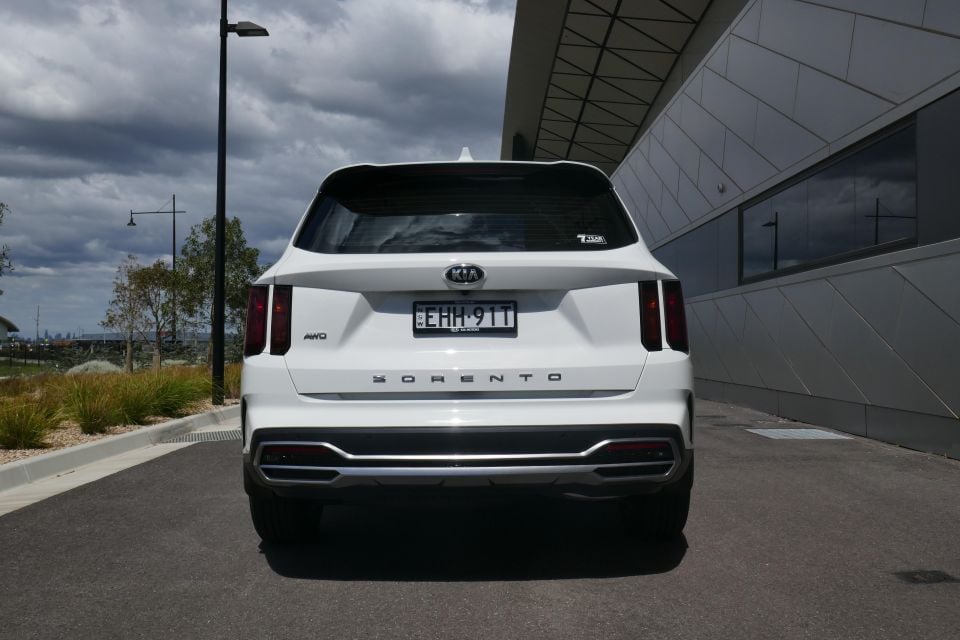
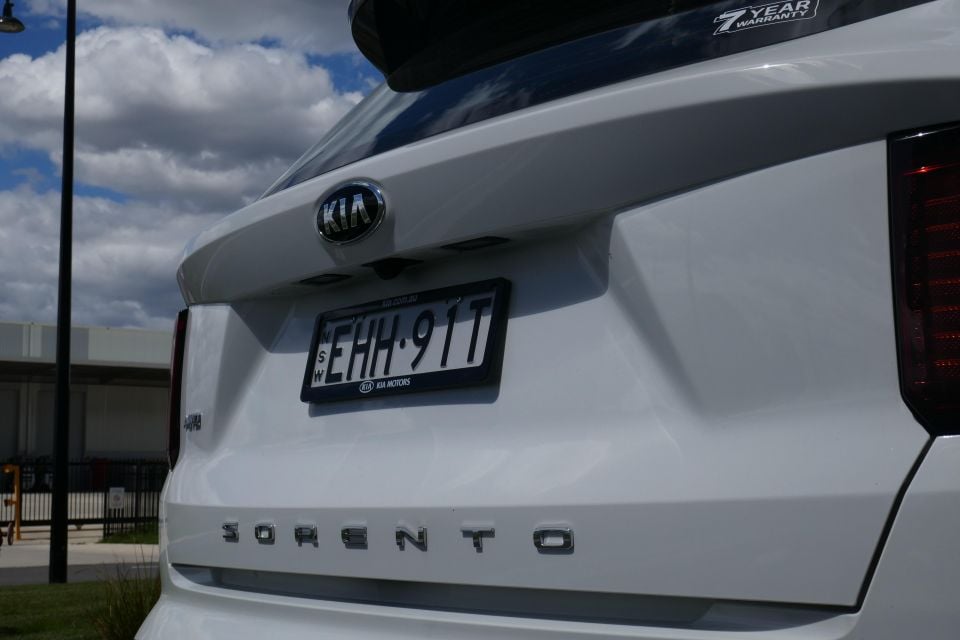

Kia is commendably offering national drive-away pricing from launch, which gives buyers extra clarity. The Sorento S with the diesel and all-wheel drive (AWD) configuration as tested costs $49,990 on the road.
From there, it’s an additional $3000 for the Sorento Sport variant at $52,990. Kia has clearly kept this ‘walk’ affordable to lure people out of the base model. The Sorento Sport+ then costs $57,390 drive-away, and the GT-Line $64,990 drive-away.
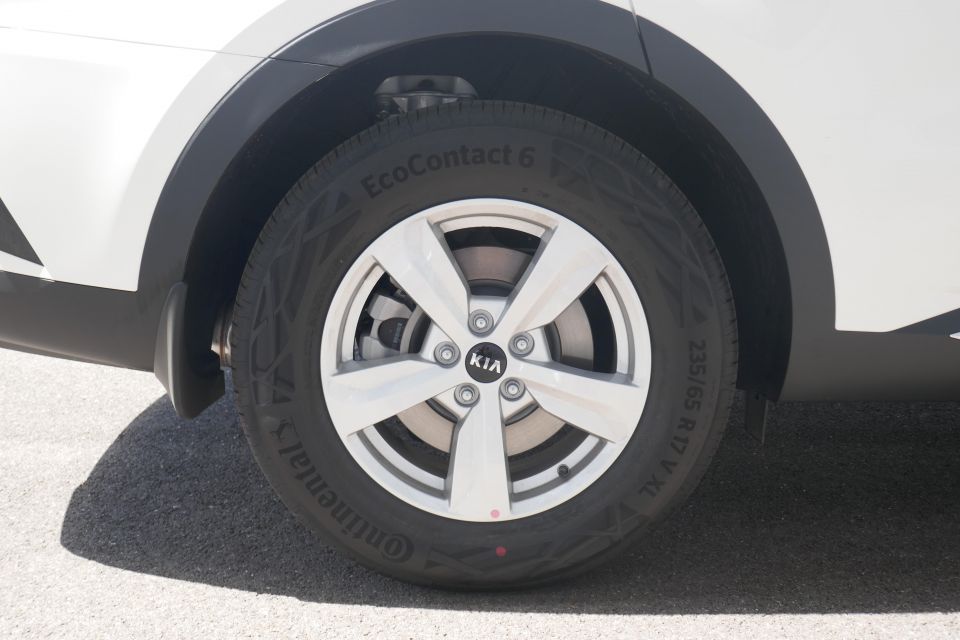
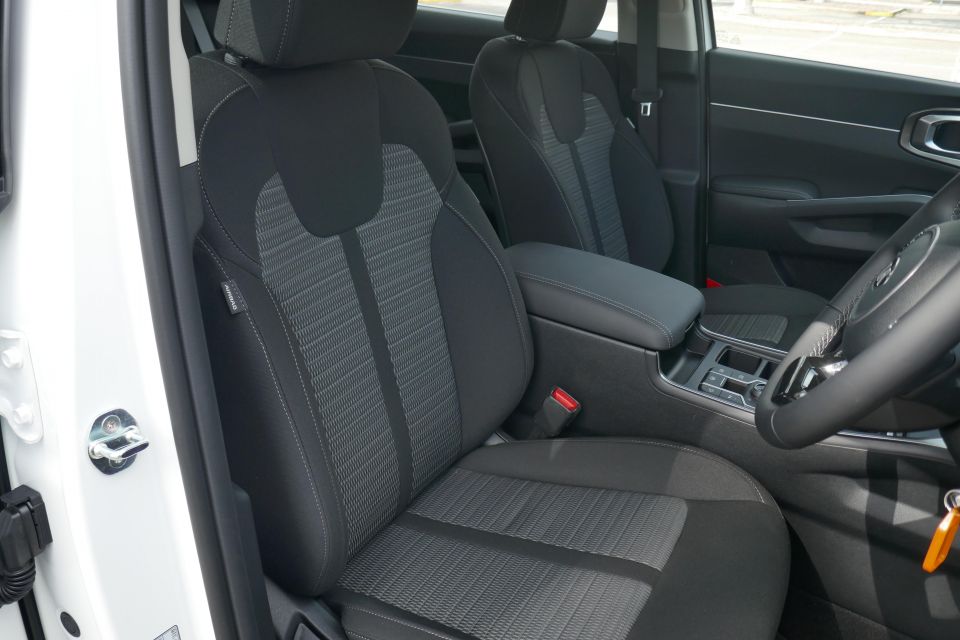

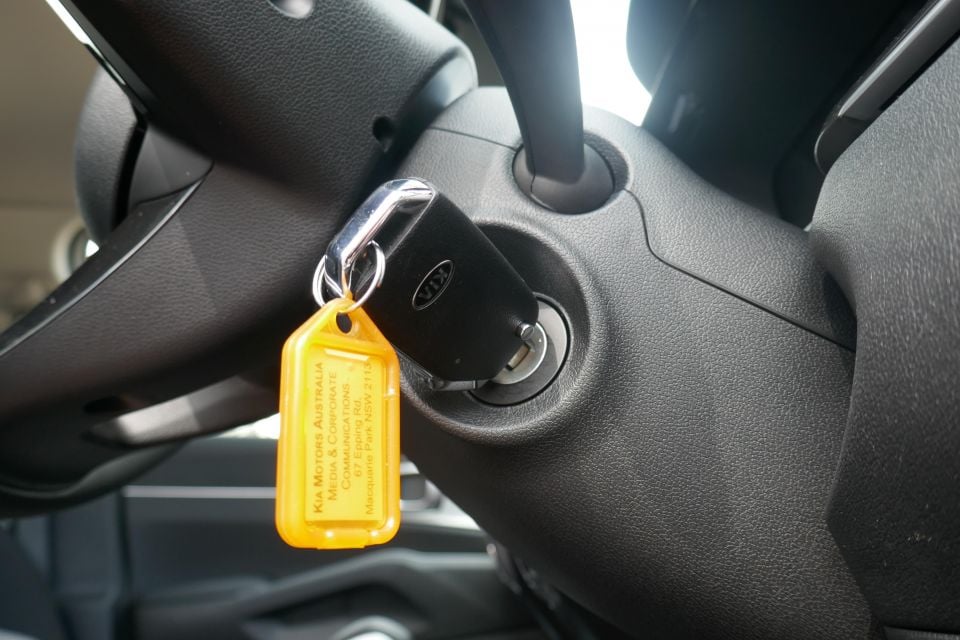
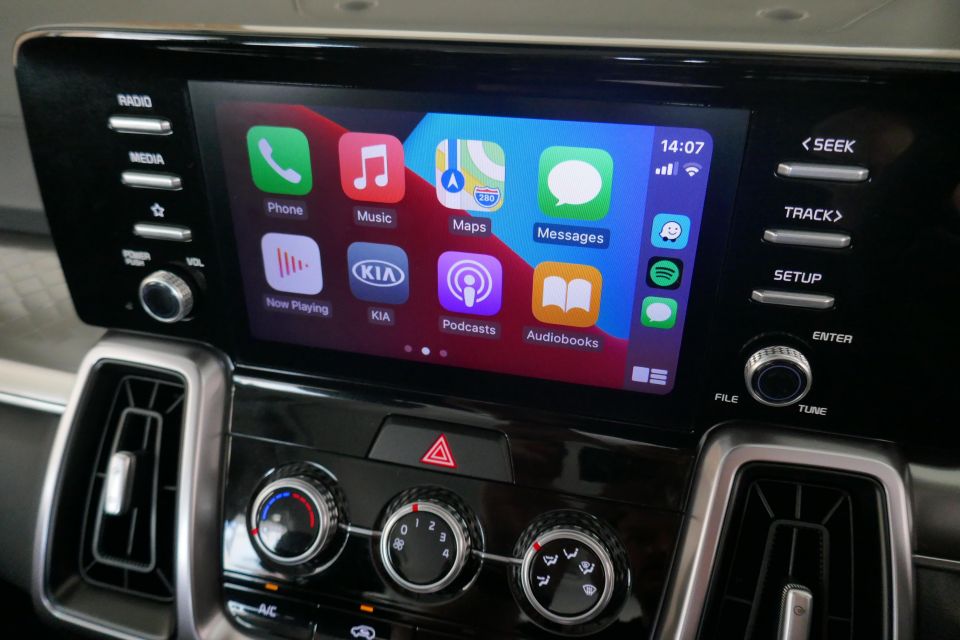
Buy your new car without the stress. It's fast, simple and completely free.

Great service from Travis and team, second time I have used this business would not hesitate to recommend them to anyone
Craig C.
Purchased a Ford Ranger in Sunshine Coast, QLD
CarExpert helped Craig save thousands on his Ford Ranger, now let us save you on your next new car.
Find a dealOn the outside are LED (reflector) headlights and daytime running lights, front and reverse parking sensors, side mirrors that fold inwards when you lock the door, roof rails, rain-sensing wipers, and 17-inch wheels wrapped in Continental tyres with a full-sized spare mounted below the boot area outside the vehicle.
There are eight colour choices: Clear White is the no-cost option, while an extra $695 gets you Silky Silver, Steel Grey, Mineral Blue, Aurora Black, Gravity Blue, and Snow White Pearl. Gee Kia, would it kill you to offer a red option?
Inside you get seven seats trimmed in fabric, a leather-wrapped steering wheel, a digital speedo in a 4.2-inch TFT trip computer, manual air conditioning with vents in the first and second rows, an 8.0-inch touchscreen, a reverse-view camera, six speakers, digital radio, Apple CarPlay and Android Auto with voice recognition, and Bluetooth/USB inputs.
The $3000 walk up to the Sorento Sport gets you extras such as 18-inch wheels, a powered driver’s seat with lumbar adjustment, a 10.25-inch touchscreen upgrade, factory satellite-navigation with 10 years of updates, and dual-zone climate control with vents for all three rows. That’s not a bad deal, actually.
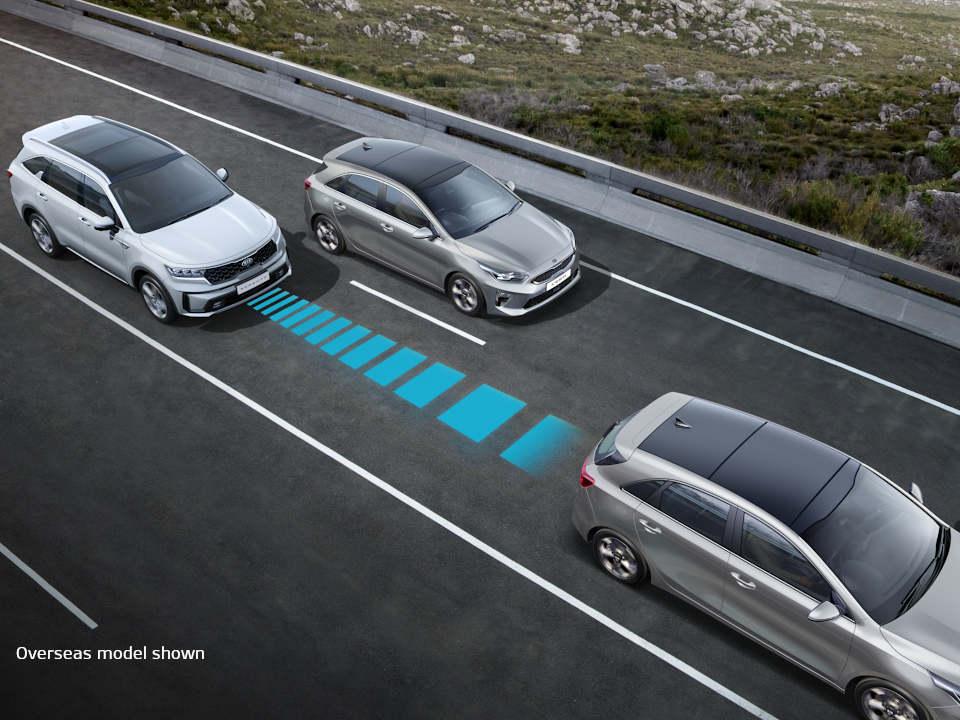
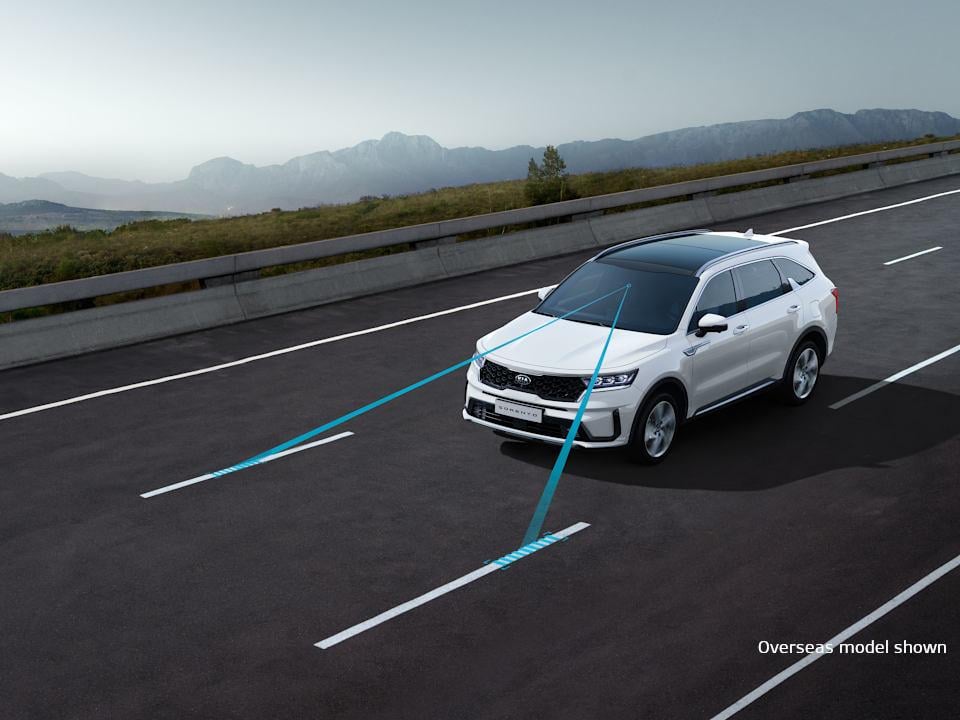

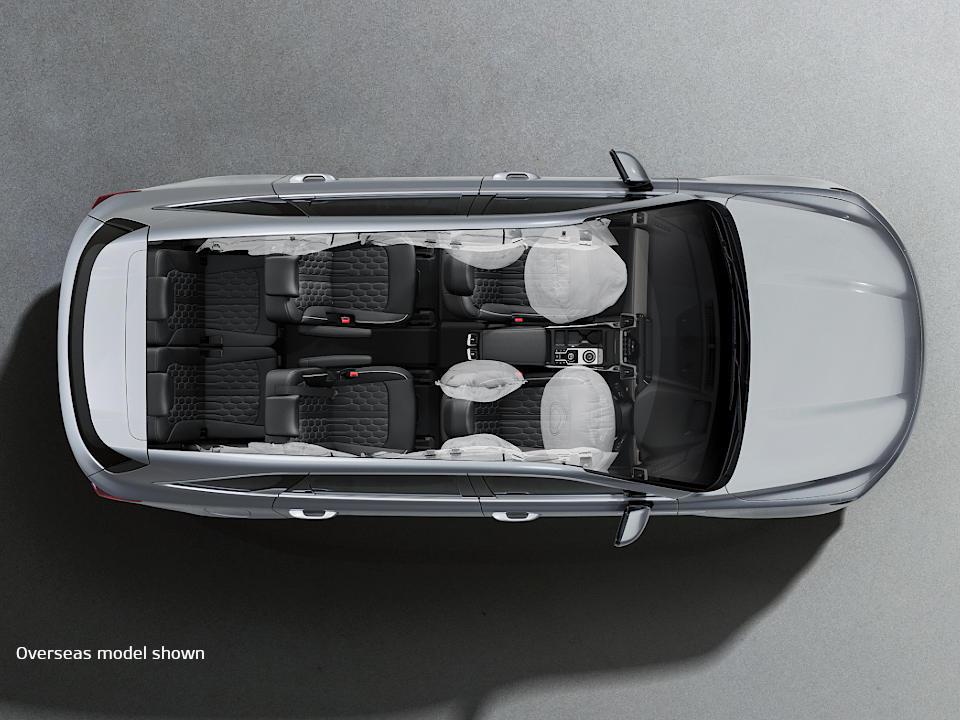
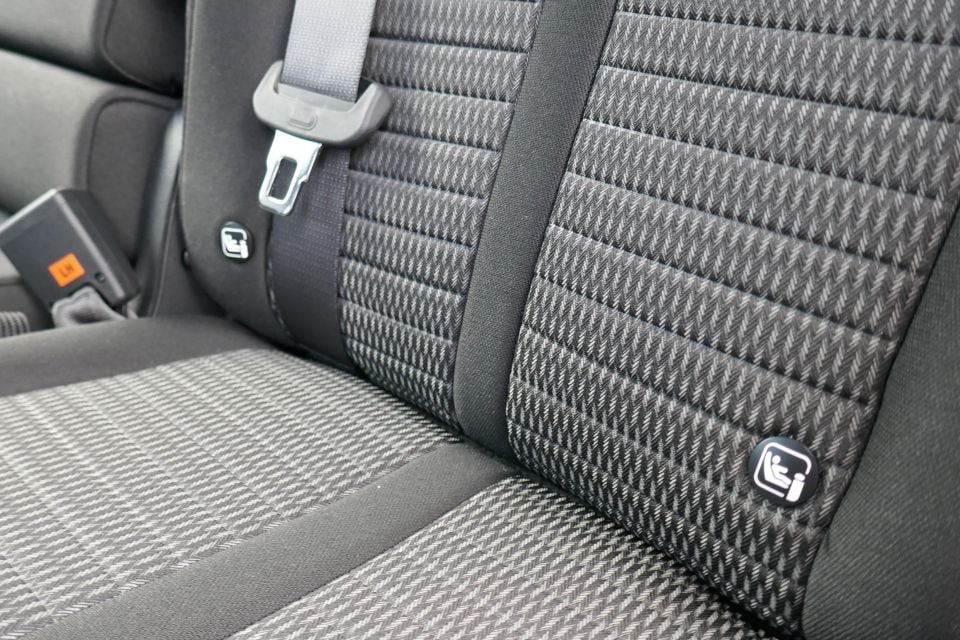
Passive safety features include dual-front and dual-front-side airbags, and a novel front-centre airbag. There are also head-protecting curtain airbags that cover the first and second seat rows, but not the third. This is an oversight. There are five top-tethers and four ISOFIX anchor points.
Safety assist features include multi-collision braking that stops the car being shunted forwards into danger after a secondary rear-ender, seatbelt warning chimes and lights for all seven seats, and Safe Exist Assist that alerts you if you’re about to open your door into an approaching cyclist when parked on the side of a road.
Active aids include autonomous emergency braking (AEB) and forward-collision alert designed to sense cars, pedestrians, cycles, and work at junctions. There’s also a blind-spot monitoring system that lights up the side mirrors, rear cross-traffic alert, lane-keeping aids with steering assist to keep the car away from road lines, a driver-attention monitor, high-beam assist, and active cruise control.
There’s currently no ANCAP crash rating available, though given its predecessor model was a five-star car we’d expect the same here. We understand results will be published before year’s end.
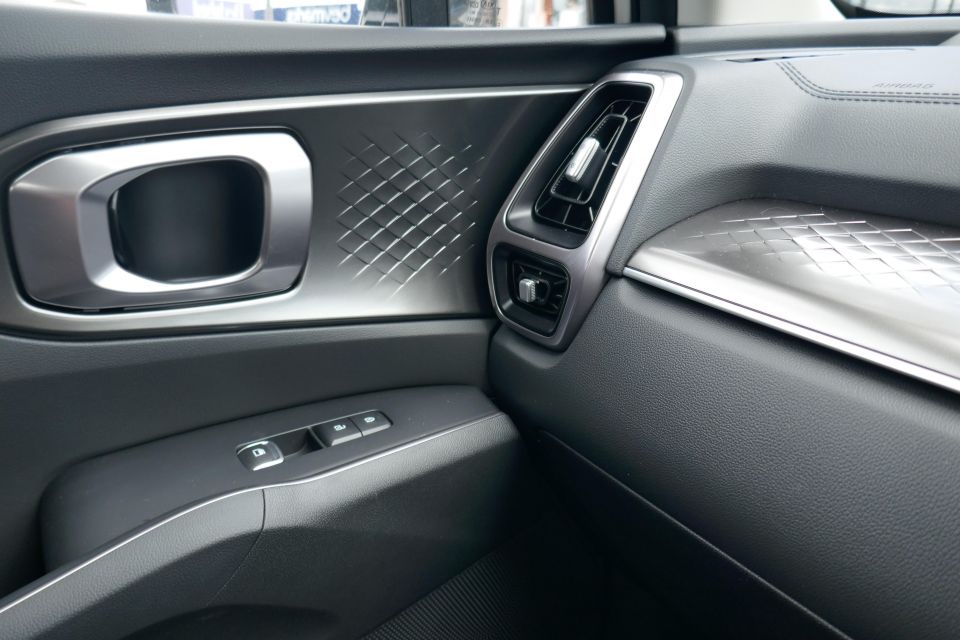
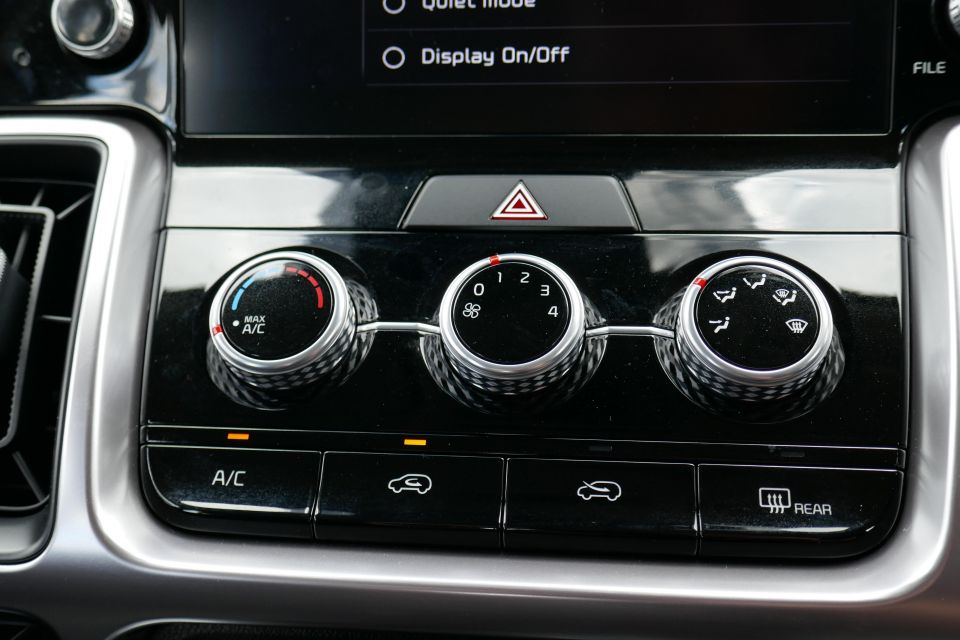

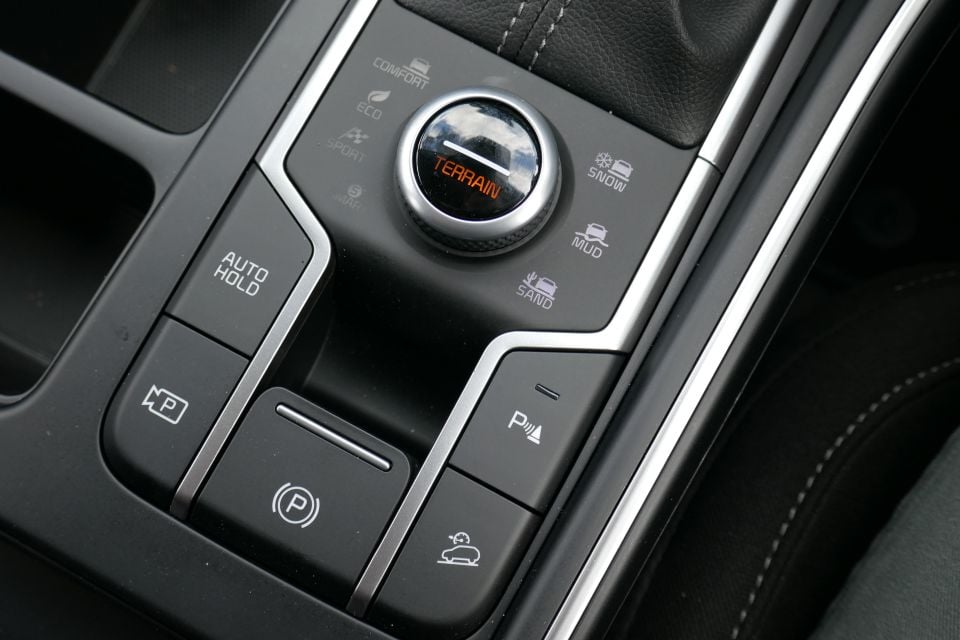
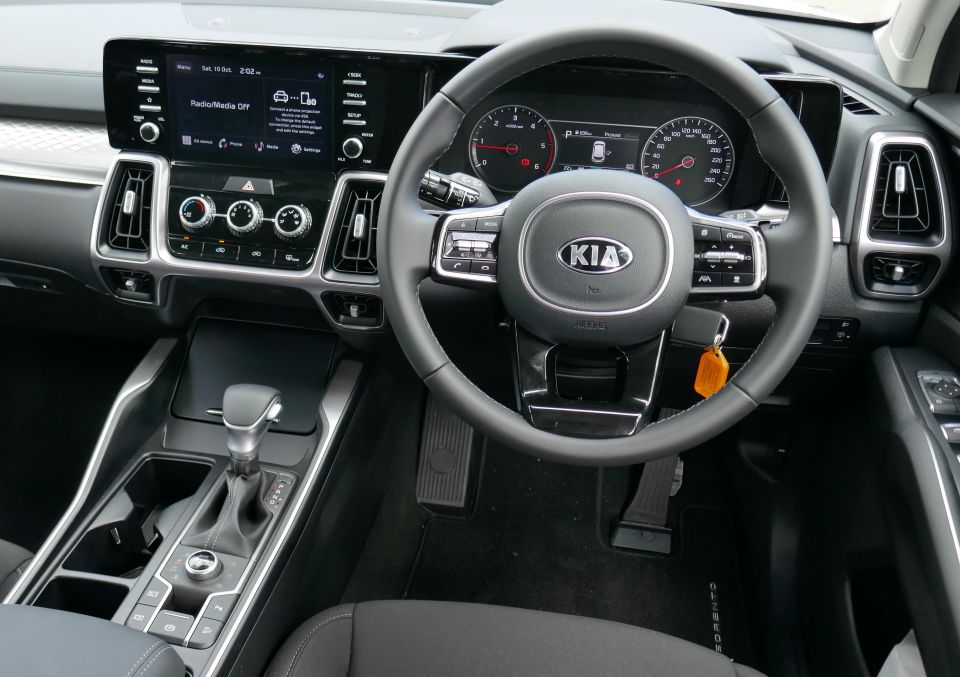
It doesn’t really feel like a ‘base’ car in terms of features or its rock-solid build quality, though the fact you actually have to put a key in the ignition barrel and twist is something of a throwback – as are those analogue air conditioning controls.
The steering wheel looks and feels good, the hard-wearing fabric seats with manual adjustments are quite comfy, the instruments are clear, and the ergonomics are well-considered. The electric park brake switch and drive-mode dial near the conventional gear shifter (the GT-Line has a shift-by-wire rotary dial like an old Jaguar) add a modern feel.
The centre touchscreen is of average size, runs a clear reversing camera, and allows wired phone mirroring in place of native maps. It’s quite a simple and no-frills setup, but loads and responds to inputs quickly enough, and handles the basics fine.
The interior materials include padding on most visible points (dash top, armrests), and some interesting patterned silvery plastic around the dash and double-vents to liven things up. Lower down on the dash you find some scratchier but hard-wearing trims, though some knee-padding along the transmission tunnel wouldn’t go astray on longer journeys.
I do wish brands would tone down their love affair with shiny black plastic though. It’s all around the centre screen and the ventilation controls, and very swiftly becomes a magnet for dust, smudges and scratches. Sun glare too. This is not a Kia-specific trend – I’ve said the same about Audis, Toyotas and Mercedes-Benzes. It’s great in the showroom after a thorough cleaning, but not good at staying that way.
There’s plenty of storage solutions such as door bins, a glovebox that can hold a 2.0-litre bottle, a deep centre console with a separate parcel shelf, and a closable storage bin under the AC controls with three USB points therein. There’s no wireless phone charger at this spec level.
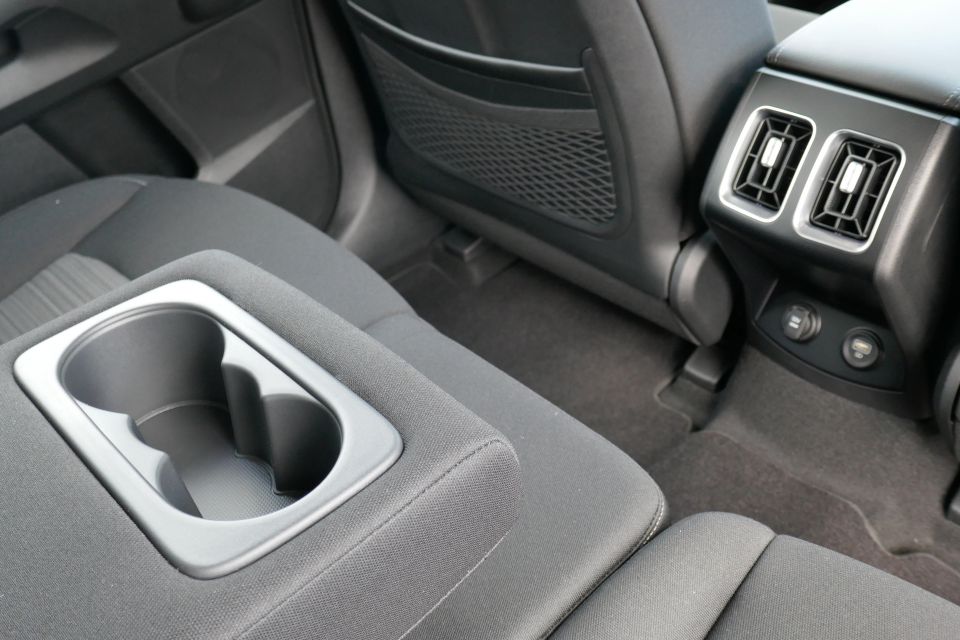
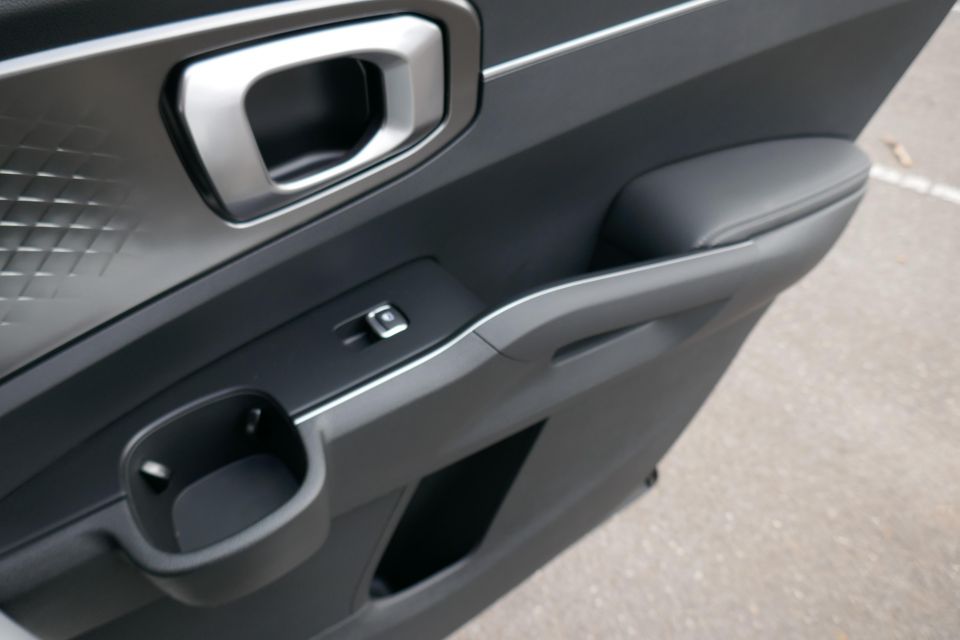
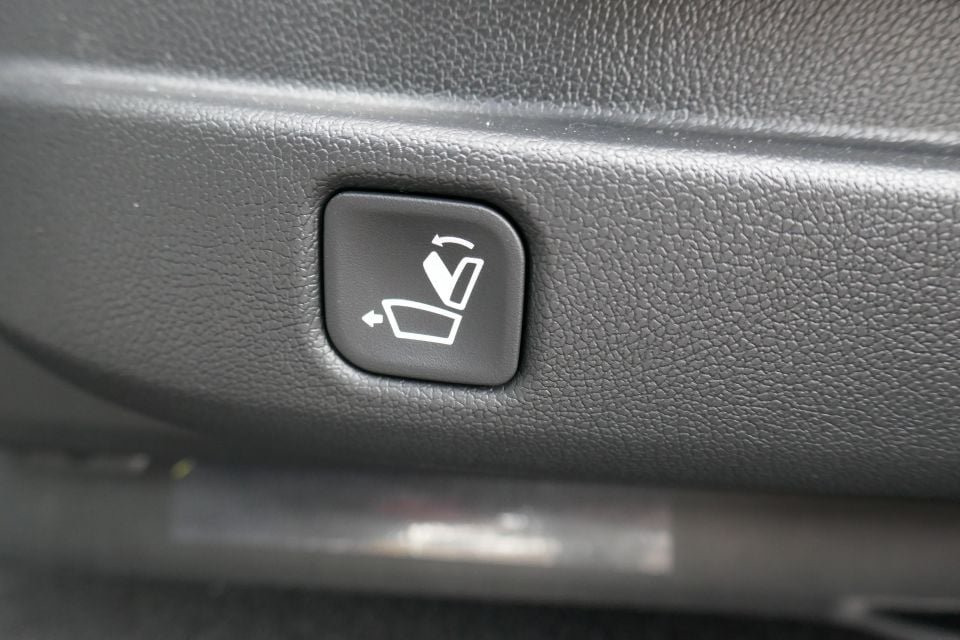


The middle-row split (60:40) bench slides on rails forwards and backwards, and the seat-backs recline by a few degrees. They offer adequate room for two adults of 2m tall or less – I’m 194cm or 6ft 4 and was comfortable – with a junior in between.
Occupants get their own vents and a single 12V and USB point, a flip-down armrest with cup holders, and doors with chunky handles, high-mounted bottle holders, and lower storage bins. The back of each front seat is trimmed in hard plastics that should be easier to clean up.
Gaining access to the third row of seating is simple. A button on the passenger-side seat base neatly slides and folds it out of the way. The third-row seats get their own cupholders, adjusting headrests, and ISOFIX/top-tether points, but no vents at the S grade level. These rearmost seats are roomy enough for kids or more diminutive adults, and when not in use they stow flat into the loading floor. Visibility out is hindered by the large D-pillar and stylised glass.
The single-piece manual tailgate is not too difficult to open or shut, and the third-row seats get nicely out of the way when stowed. Boot capacities go from 187 litres with seven seats in use, 616L with five seats in use, and 2011L (two cubic-metres) with just the front two seats in use. To fold the middle seats flat is as simple as pushing a button in the boot. Clever.
There are two small but important observations on the Sorento’s boot. One, there’s a neat storage area under the floor for the cargo cover (which comprises a solid bar with pull-out flap) meaning you don’t need to stow it in the shed, or loose in the boot. The second is the commendable fitment of a full-size alloy spare wheel under the vehicle, in a segment where space-saver wheels or repair kits are common. On a long road trip away, I know which solution I’d want.
Overall, the base Sorento’s interior is low on frills, but the design is thoughtful and practical and the quality is good. For a $50,000 family SUV it gets most things right. I just wish the airbags covered the third row in full, and that Kia would go easy on the shiny surface trims.
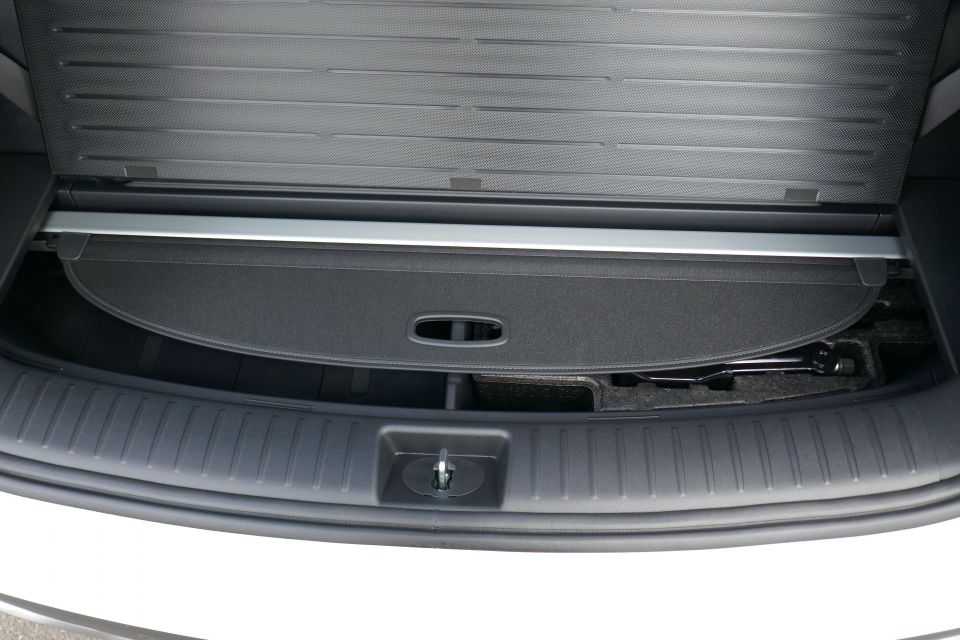
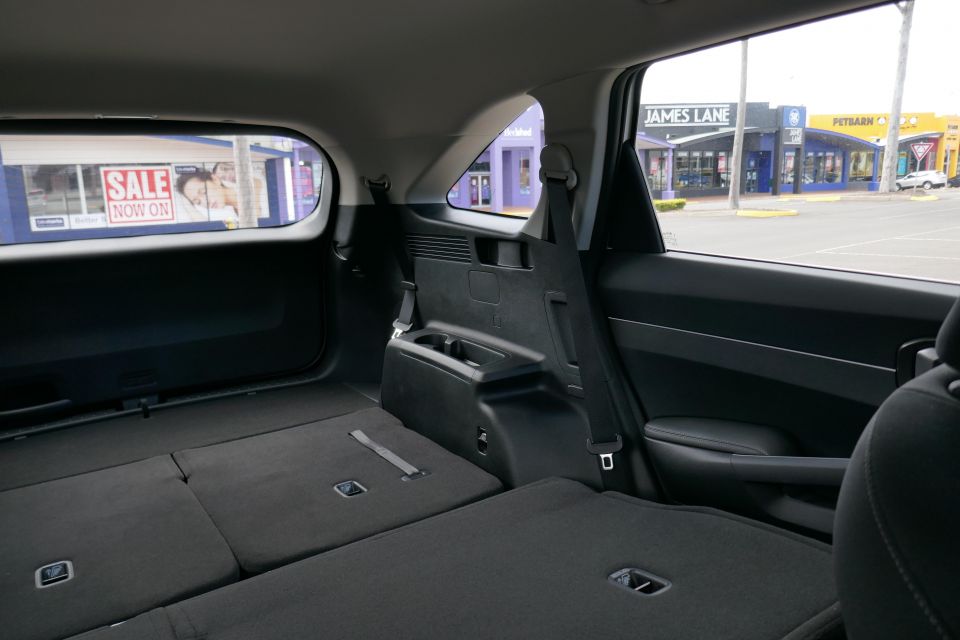
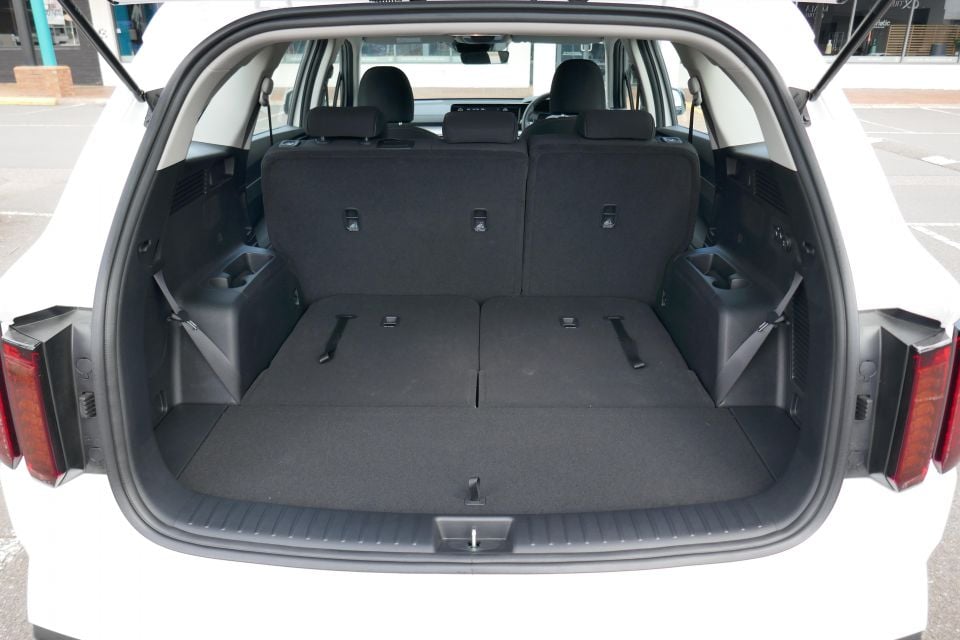
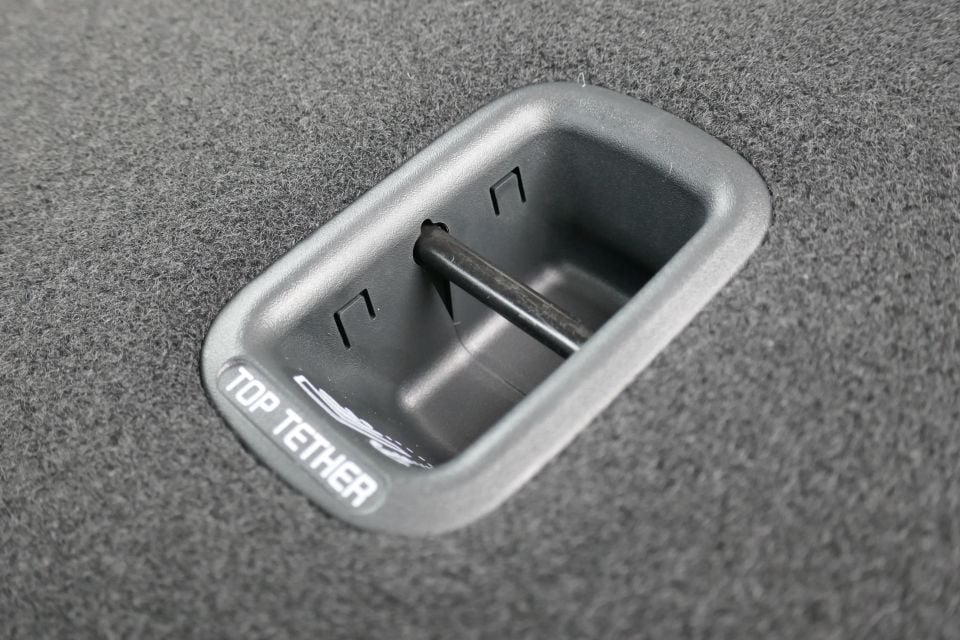
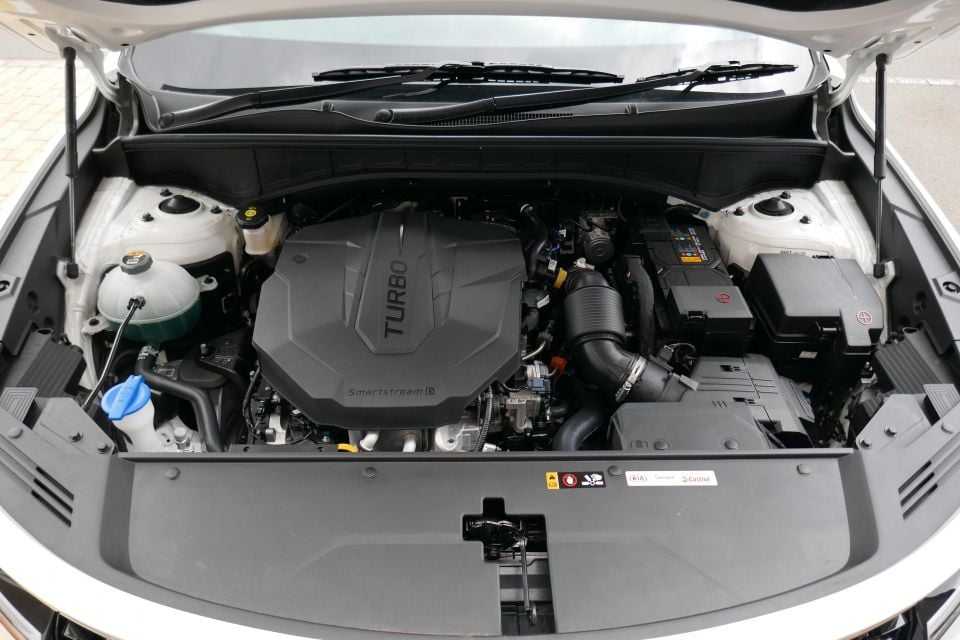
The 2.2-litre four-cylinder turbo-diesel engine is similar to the unit powering the old model, but has received a few upgrades. For one, its new aluminium block in place of the old cast iron one saves a claimed 19.5kg.
It produces 148kW of power at 3800rpm and 440Nm of torque between 1750 and 2750rpm. As standard, it comes mated to a new eight-speed wet dual-clutch automatic transmission (8-DCT) that Kia says reduces fuel consumption by up to 15 per cent over the old torque-converter-type unit.
The diesel models are exclusively sold with a part-time all-wheel drive (AWD) system that defaults to the front wheels but sends torque to the rear if the front tyres are battling for surface traction. A locking mode fixes the front-to-rear torque split when needed, and there are three surface-dependent driving modes you can select that change the transmission response, torque distribution, and stability control sensitivity.
For background, a Sorento S with front-wheel drive (FWD) and a standard 200kW/332Nm 3.5-litre petrol V6 is available for $3000 less. Fuel consumption suffers though: the diesel AWD’s claim is 6.1 litres per 100km on the combined cycle, compared to 9.7L/100km for the petrol with FWD. The tank in both is 67 litres.
Both engines are rated to tow a maximum of 2000kg, with 200kg towball downloads. But if you do lug the family caravan or boat on holidays, I’d strongly recommend the diesel on account of its greater torque output and AWD stability for taking off on low-grip surfaces.
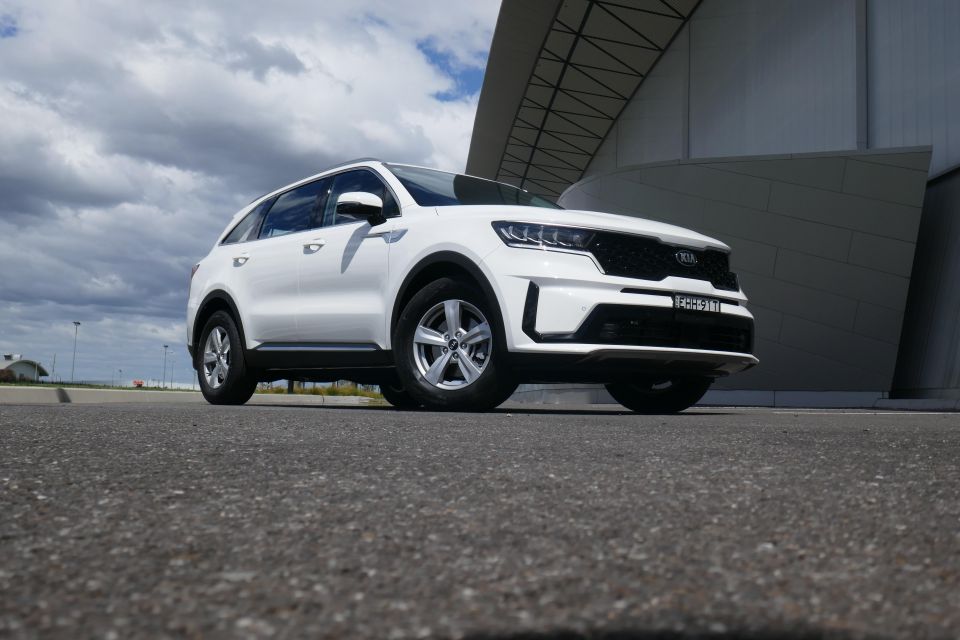
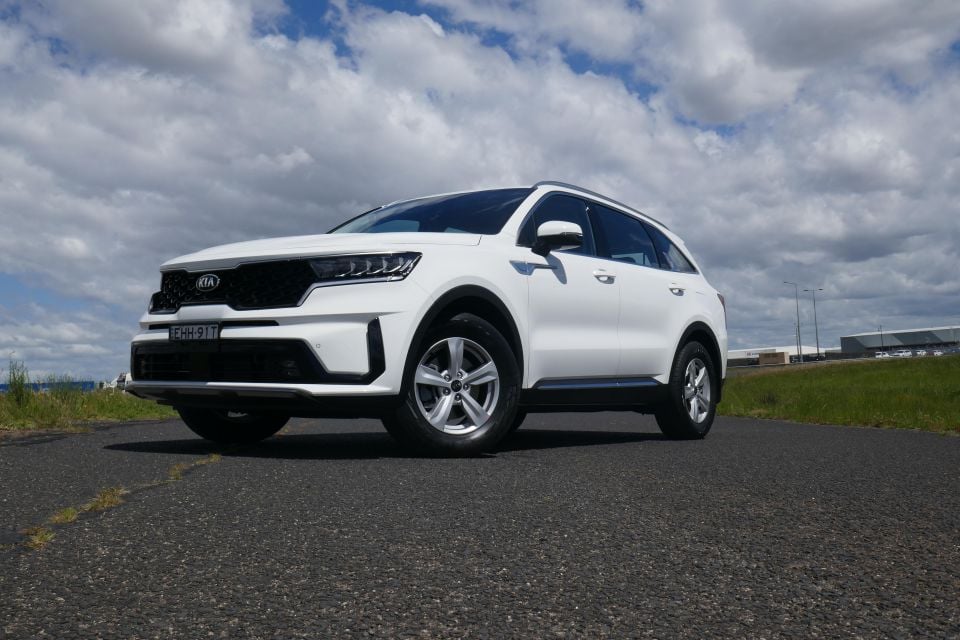
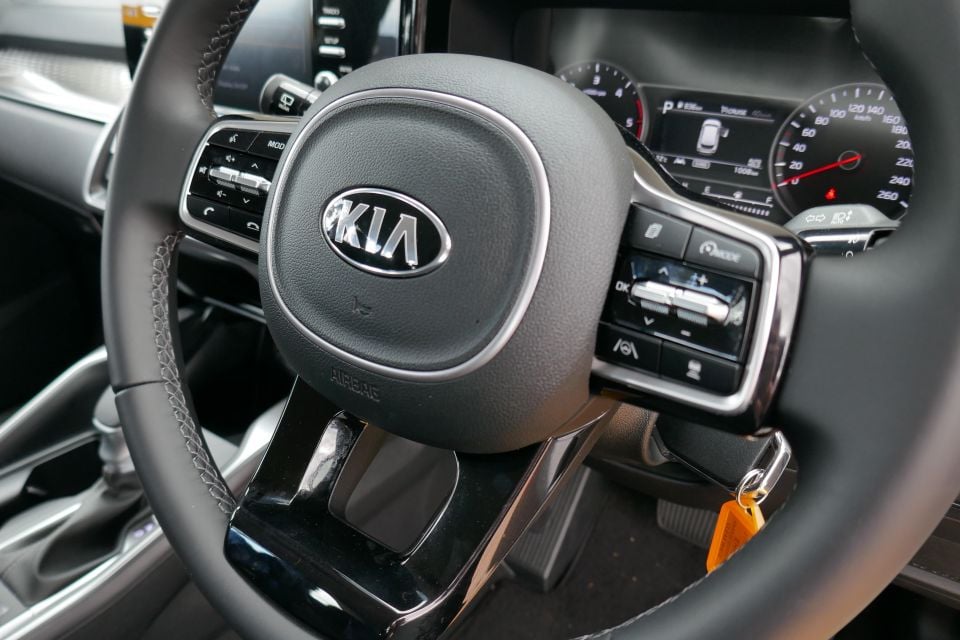
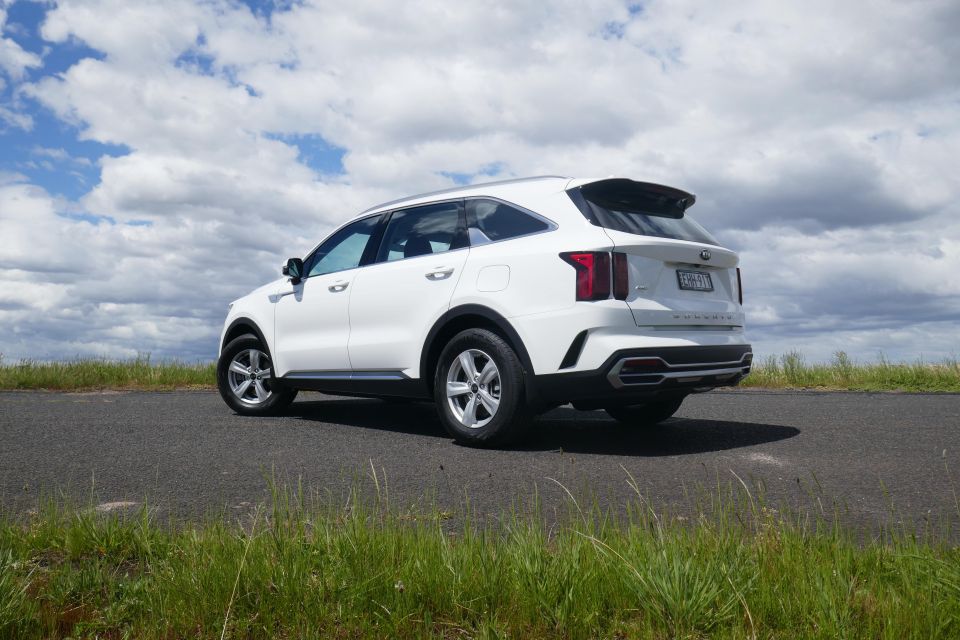
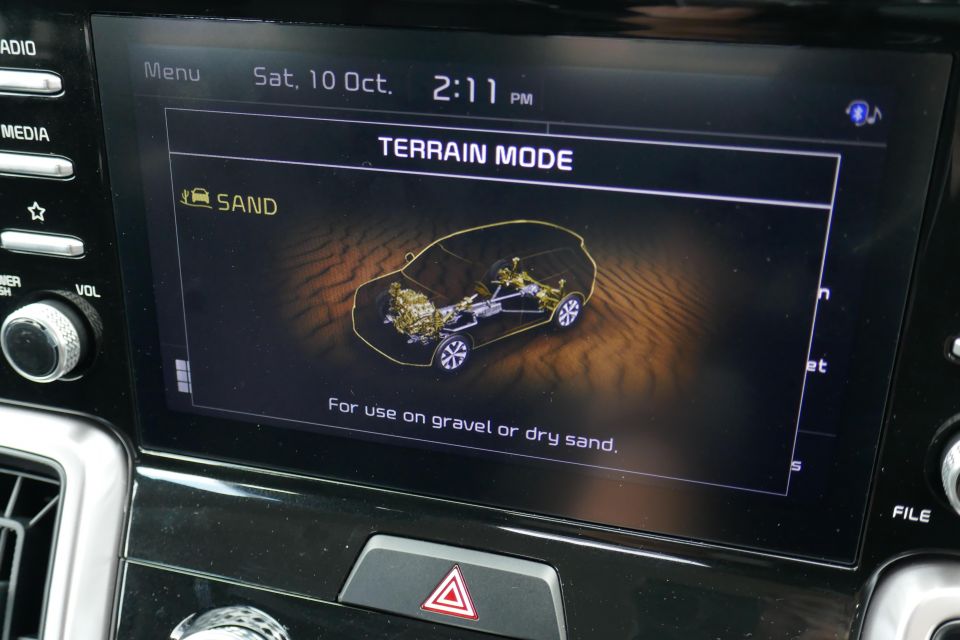
The engine is relatively refined and free of harsh diesel clatter from inside, though you won’t mistake it for a petrol or hybrid either. In typical form you have strong response because so much torque is available just above idle, and it makes short work of hills or punching into gaps.
The various driving modes don’t make a great deal of difference, though the DCT holds lower gears in Sport, allowing the engine to rev out a little more.
That transmission is clever because the drivetrain holds slightly higher-than-expected revs on take-off, which seems to mitigate any low-speed harshness that you sometimes find in dual-clutch setups. And once you’re rolling, shifts are rapid and decisive. I ticked off a 0-100km/h dash in 9.4 seconds and over a 200km mixed loop including lots of urban traffic time, managed a respectable 8.4L/100km fuel readout.
This is perhaps a controversial view, but I do think Kia should’ve fitted a stop/start system to switch the car off at traffic lights. In school zones for example, I don’t love the idea of the diesel chugging away at idle, and can see a time when you’d like a little silence. Maybe that’s just me?
MORE: 2021 Kia Sorento PHEV and Sorento hybrid set for Australia
That new design is built on a new monocoque, with a stiffer body shell than before. The MacPherson strut front and multi-link rear suspension have been tuned in Australia for local conditions, meaning specific calibration of components like bushes, and particular spring rates and stabiliser bar thicknesses. There are 325mm-diameter ventilated disc brakes at both ends, which give reassuring stopping power.
The best element of the Sorento S’s dynamics is the ride comfort. The 235/65 Continental tyres have plenty of sidewall that cushions occupants from road imperfections, particularly at low speeds. At the same time, the suspension has sufficient travel and the right damper setups to absorb impacts, corrugations or speed humps nicely while maintaining good body control. The 1908kg Sorento is no hot hatch, but it’s more agile or reassuring through turns than most competitors.
Despite the presence of on-demand AWD with a locking mode, various terrain modes, and even downhill-braking control, don’t mistake the Sorento for a body-on-frame off-roader like a Mitsubishi Pajero Sport, Toyota Prado or Ford Everest. It has road tyres, only 176mm of ground clearance, no locking rear differential, and no low-range gearing, so it’s a soft-roader only. But for snow trips, the odd light-duty trail, or a boat ramp, it should be in its element.

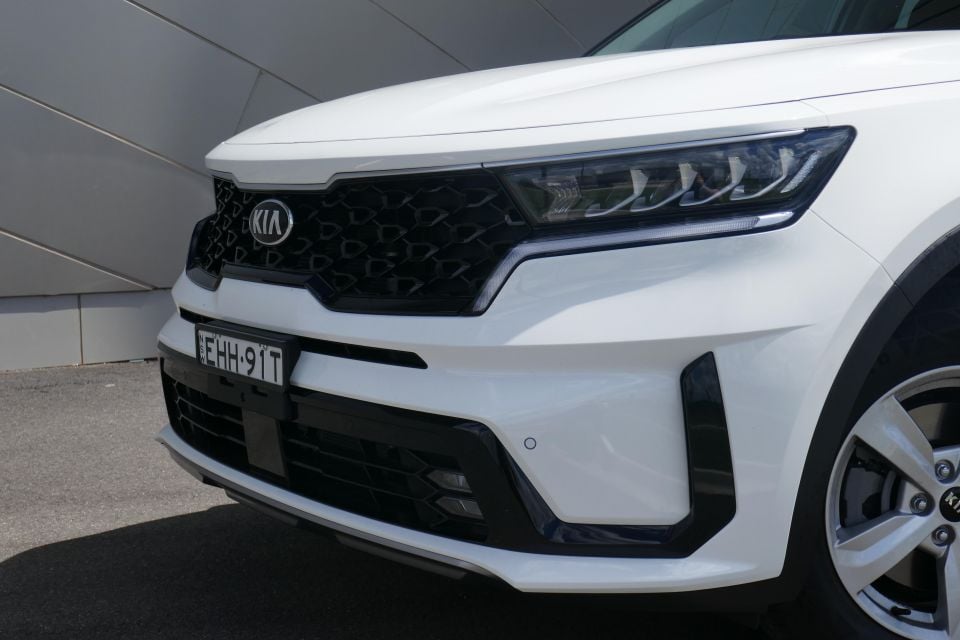
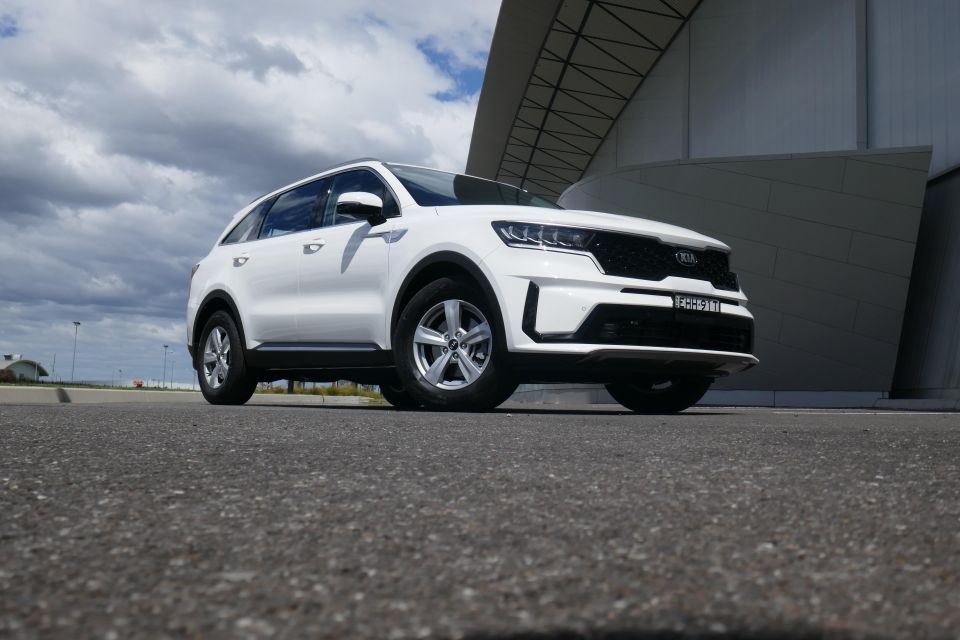

Kia’s transferable seven-year, unlimited-kilometre warranty remains one of the longest in the industry. The company also gives you up to eight years of free roadside assist cover, renewed annually so long as you keep servicing your Sorento at a Kia dealership.
There are also advertised servicing prices for the first seven visits, at intervals of either 12 months or 15,000km – whichever comes first. The visits cost: $335, $544, $408, $729, $377, $670, and $400. These prices include the cost of things such as filters and oils, unlike some rival plans that throw in extra charges to keep the headline figure lower.
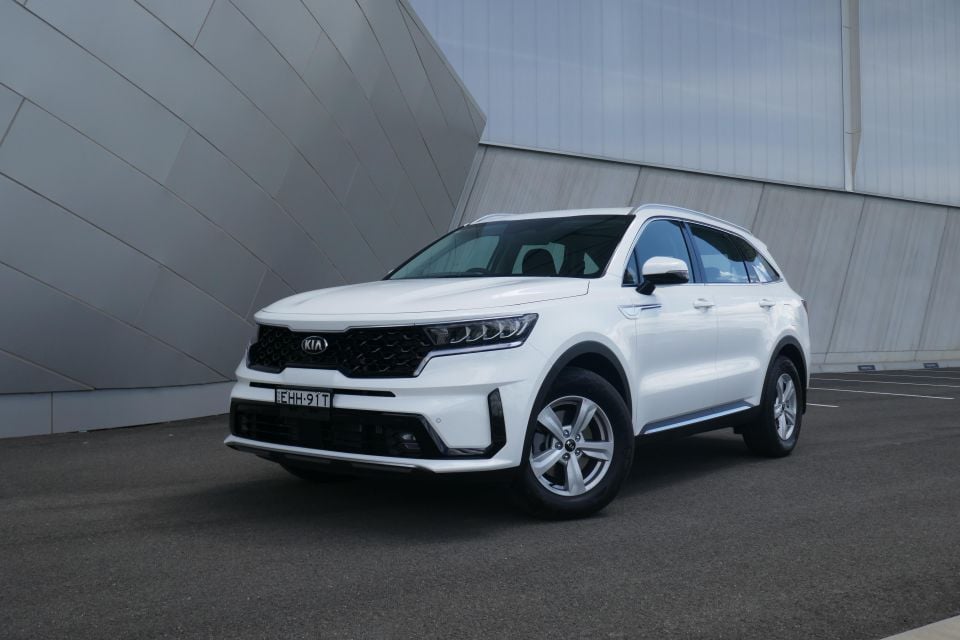
The Sorento S misses out on some great luxury and high-tech features the range-topper offers, but for somebody after a family bus that does the fundamentals it’s great.
The ride comfort is notable, the localised handling gives a feeling of surety, the diesel engine is efficient and has plenty of punch, the interior is well-made and thoughtful, and the running costs are transparent.
Personally I think the stretch to a Sport is easily justified, but the lure of a $50,000 drive-away price point will be strong for many people.
Click the images for the full gallery
Where expert car reviews meet expert car buying – CarExpert gives you trusted advice, personalised service and real savings on your next new car.


Max Davies
7 Hours Ago


William Stopford
23 Hours Ago


Ben Zachariah
24 Hours Ago


Derek Fung
1 Day Ago


Matt Campbell
1 Day Ago


William Stopford
2 Days Ago